Driving the First Car to Ever Cross Antarctica
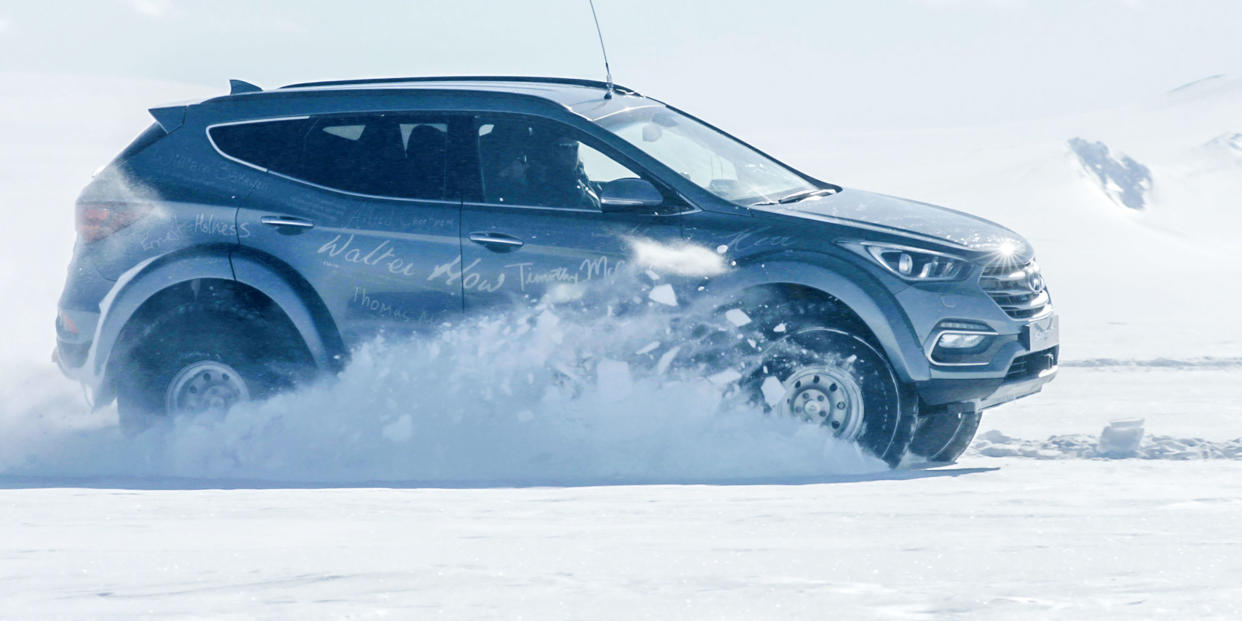
The Mark Corrigans of our modern world might be tempted to explain the endless courage of Edwardian pioneers solely as a trait of the period itself. Today's cynics might point at the fact that folks in the early 20th century just didn't have the life expectancy of our times, and with one war coming after another, putting it all on one card was an easier decision to make at the time.
Some did that by strapping into a car with a 28.3 liter four-cylinder geared to do 130 mph at 1000 rpm; others wanted to boldly go where no one has gone before. But the courage of the early 20th century isn't lost in the 21st. In 2012, a man went skydiving from outer space; in 2018, a daredevil will try to surpass 1000mph on four wheels. If that wouldn't deserve a high five in 1912, it's only because high fives haven't been invented back then.
Sir Ernest Shackleton's name should ring a bell to anybody who ever came within eyeshot of a bookshelf, a newsstand, or a theater stage. The Anglo-Irishman led three British expeditions to the Antarctic, and was known for putting the lives of his men ahead of his own quest for glory, turning back to save his crew instead of forging ahead when conditions turned dire.
After Roald Amundsen beat him to the South Pole in 1911, Shackleton purchased the purpose-built Norwegian schooner Polaris, rechristening it to Endurance after the Shackleton family motto fortitudine vincimus-"by endurance we conquer." His new aim was to be the first to cross Antarctica, using an additional steam engine when needed to guide the almost brand-new and highly durable ship across the ice fields.
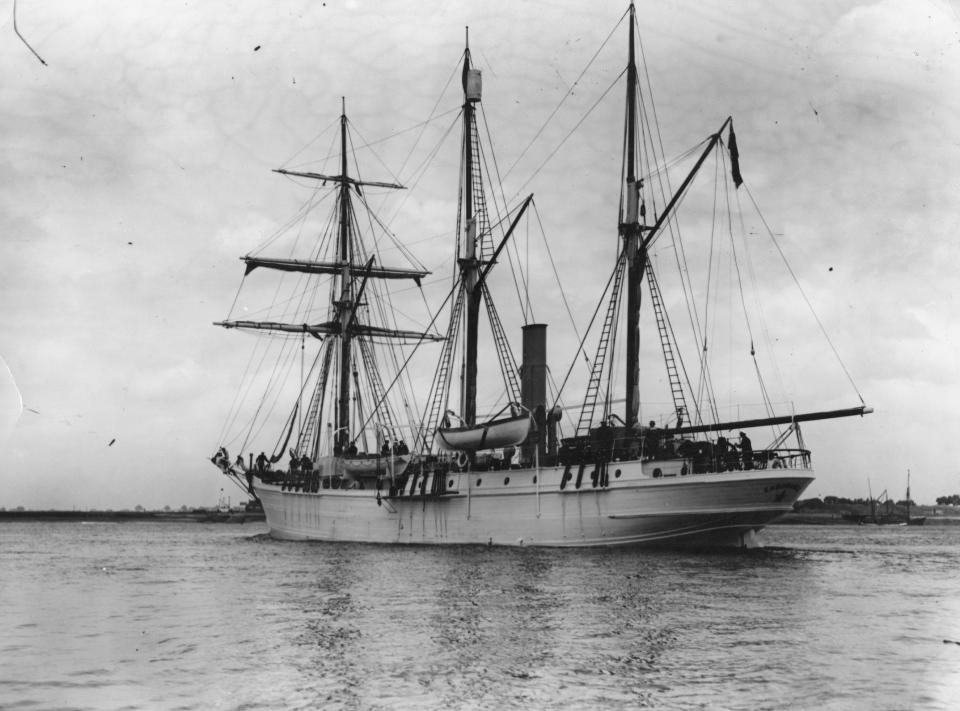
It did not go as planned. The Endurance got icebound in less than a month, drifting frozen in the Weddell Sea from January until October. By November, the ice had pierced the ship's hull, forcing Shackleton's 27-strong team to put all the supplies and equipment they could salvage into the Endurance's three life boats and abandon ship for Elephant Island. While hunting for seals and penguins to survive, Shackleton realized the island was so far from commercial shipping lines, the crew had zero chance of being rescued. He asked the mission's carpenter to fortify their heaviest, 23-foot long boat, using canvas, oil paint, and (according to Shackleton biographer Ronald Huntford) seal's blood to make the boat tough enough to ferry five men on a 920-mile journey across the Southern Ocean. Out of three highly tempting destinations, the British island territory of South Georgia seemed to be their best bet given the direction of the prevailing winds.
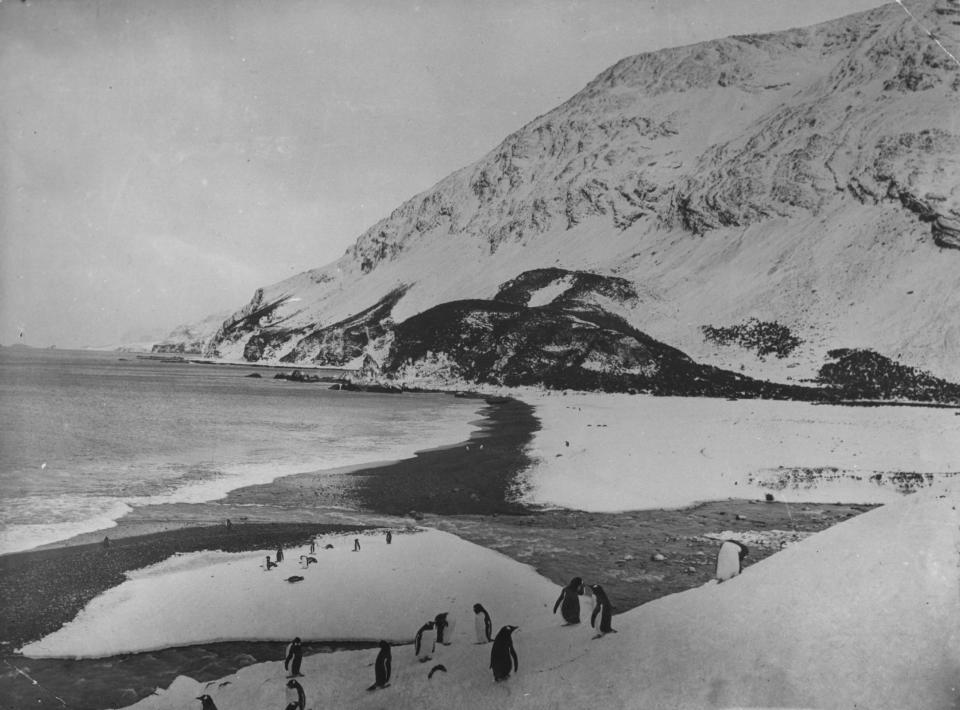
Sixteen days later, they touched land again. Three men from the crew continued on foot for another 36 straight hours, finally reaching the whaling city Stromness. The local chief, Norwegian captain Petter Sørlle couldn't believe his eyes.
After having a bath, Shackleton immediately began organizing the rescue of the remaining two crew members on the other side of the mountains-and the 22 back on Elephant Island. Those men spent four and a half months alone, with no knowledge of the fate of the voyagers they'd sent back to civilization. It was August before Shackleton could finally sail in to get them out, using the Chilean tug Yelcho.
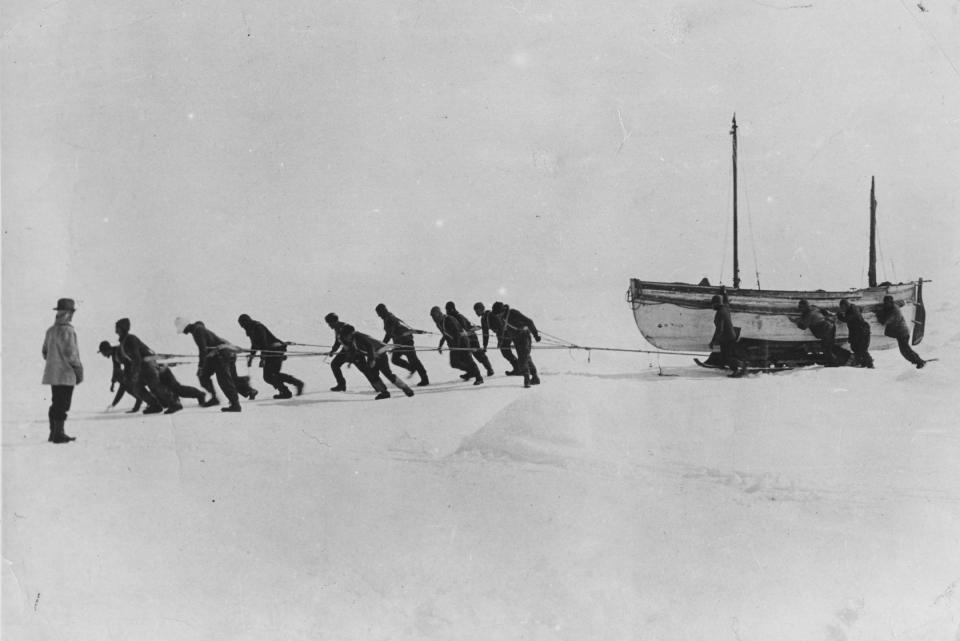
Traversing Antarctica today is slightly easier, to say the least. Yet in the last 100 years, nobody has managed to do it by car. That's where Hyundai came in, quite cleverly. Inspired by Shackleton's story, the automaker spent 10 month searching down the legendary explorer's ancestors. Luckily, his great-grandson, Patrick Bergel, was very keen to take on the 21st century challenge.
Being an indoor guy with a job in the digital space, Bergel spent a lot of time in Iceland preparing for the journey under the guidance of Girli Jonsson, a man who has spent more than five years exploring the icy continent. Arctic Trucks, a company known for outfitting SUVs for south pole duty, was secured to build a properly fortified Hyundai.
Following Shackleton's original route meant going from the Union Glacier Camp through the South Pole to McMurdo Sound, driving for 30 straight days, 20 hours a day and covering nearly 3700 miles-under 24-hour sunshine, surrounded on all sides by infinite whiteness with no visual landmarks for guidance.
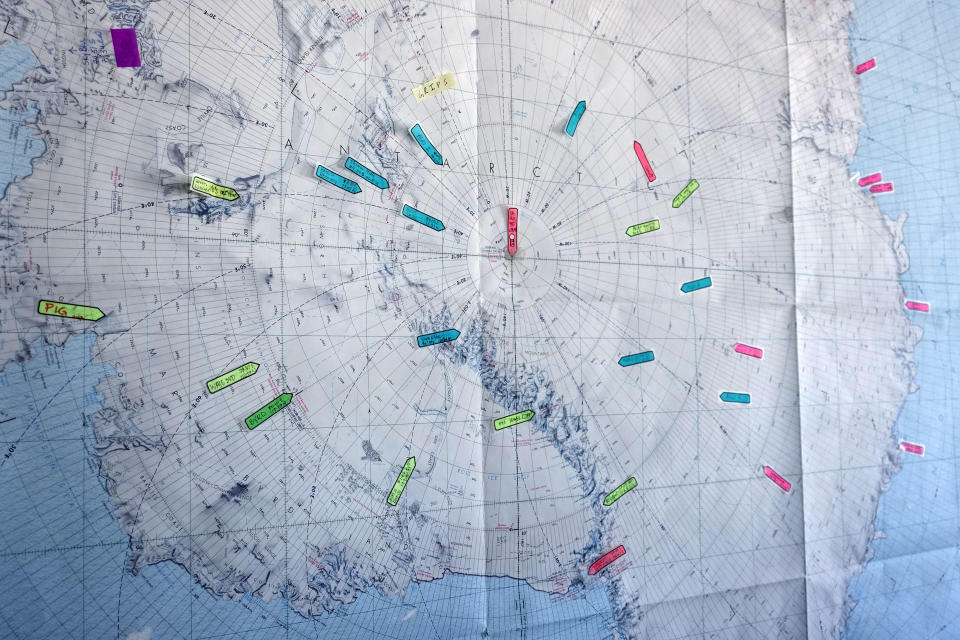
The tool for the job, the team decided, was a Hyundai Santa Fe 2.2 diesel. Plain and simple, with a bone-stock engine, transmission, and front differential. The fuel tank capacity was increased to 60 gallons and an engine pre-heater was installed to help in the extreme cold of -18 ºF. The suspension was lifted and sub-frames modified to make space for the 38-inch tires, which ensured that the burly Hyundai would glide over the snow instead of plowing through it.
Arctic Trucks did give the unassuming crossover one significant advantage: reduction gears in the wheel hubs to provide an increase in torque to spin those huge floatation tires. With an average speed of 16.7 mph throughout the expedition, the Santa Fe needed low-end grunt more than a long-legged overdrive.

You may be wondering how Bergel and Jonsson planned to drive a diesel-powered vehicle in temperatures that turn the fuel to jelly. Around the South Pole, vehicles run on commercial aviation fuel-Jet A is rated to ambient temperatures as low as -72ºF, making this, in a way, a jet-powered Hyundai. The team fueled up at at Union Glacier, getting another top-up 400 miles later at an airstrip. Next was a major refueling stop at the South Pole, ahead of the longest leg of their journey-from the South Pole to McMurdo, a distance of nearly 1000 miles. They took on twice as much fuel as the drive would require, ensuring they wouldn't run out in case of a setback.
The tires had one tenth of the normal air pressure in them to maximize the contact patch and be kind to the delicate environment. With these wide tires at such low pressures, a Santa Fe could drive over your hands without hurting them.
Despite the Hyundai SUV's humble origins, Bergel and Jonsson didn't have too many issues to report. The longest unscheduled stop was 45 minutes long, to secure a bolt that came loose during driving. The Santa Fe also overheated once, if you can believe it, when the wind shifted and started blowing the same direction as the rig was traveling. The car's airflow problems were solved by propping the hood open with a piece of wood. In a place where mother nature endeavors to break everything, the jacked-up Hyundai's reliability record is an impressive achievement in itself.
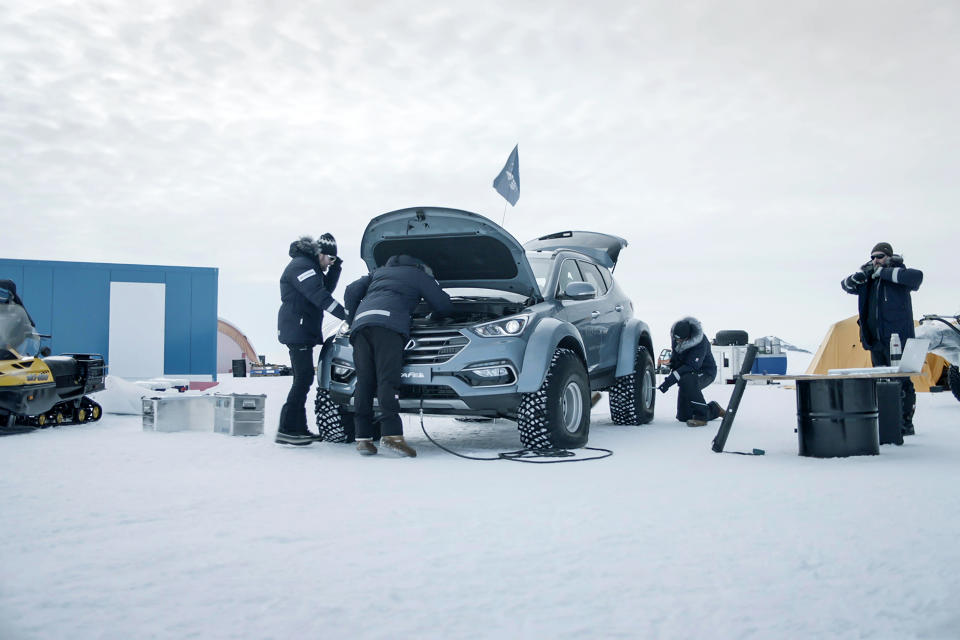
Perhaps not surprisingly, if you want to transport heavy equipment to a place where no civilian airplane should land, you need Soviet machinery from the Cold War era. Team Hyundai delivered its vehicles and crew to the Antarctic from Chile using an Ilyushin Il-76, the mother of all cargo planes.
Here's how Mr. Bergel describes completing the journey that nearly killed his great-grandfather:
We flew to Chile and then down to Punta Arenas, the most populated area in the south with an airstrip and the jumping-off point for people coming into the west of the Antarctic. Then we flew over, unloading the car on a blue ice runway with the Drake Icefalls-the end of a glacier crashing between two mountains-as the background. It was a first taste of the kind of impossibly beautiful stuff that you see down there. From there, to Patriot Hills and once you get past there you enter two or three days of featurelessness studded with sastrugi ice structures that get laid down by the wind. They are incredibly beautiful, they've got this kind of kinetic energy to them, like Brancusi sculptures that have been half-buried and re-formed. Very little snow actually falls in the Antarctic–only a few centimeters a year–and it's really just ice particles being moved around, so you really have to pick your way through those, rather than drive across them.
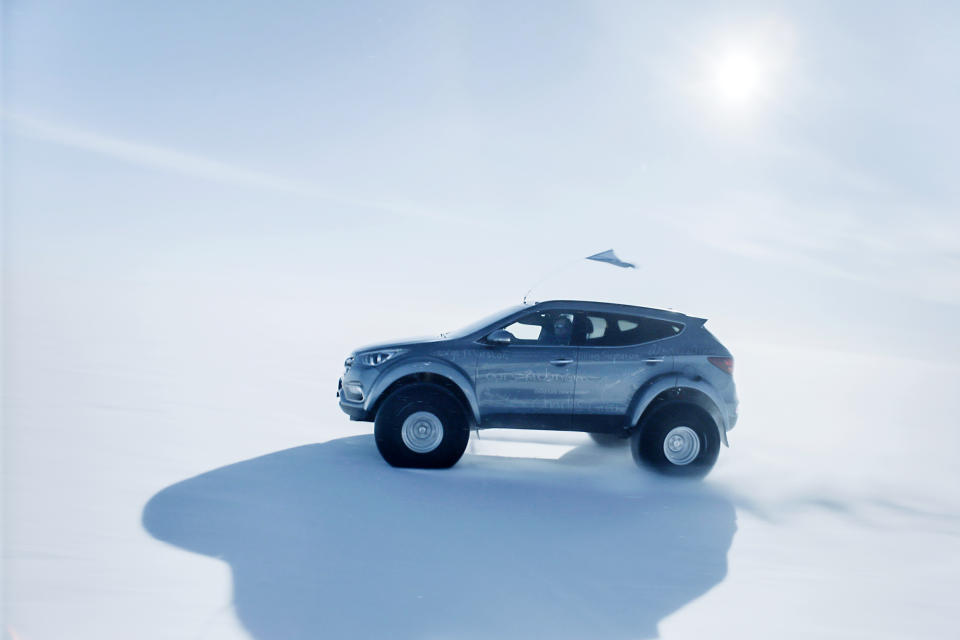
At the South Pole, it was just a rush of joy to be there at the bottom of the world and the sense of the planet becomes much more apparent. And then the fact that this was a place that my Great Grandfather tried to get to more than once and I was there, it felt like a genuine connection, one I could not have had without going. After that, we drove down the Leverett Glacier, which is a chunk of travel, and then it is pretty featureless again. So that's kind of a slog. Then we came across the Traverse, which was great-it's kind of like a road and at times you get up to reasonably good speeds. Then there's a sort of neck where the Leverett Glacier ends and the Trans-Antarctic Mountains begin, which is unbelievably beautiful–and this is the point at which nobody in a wheeled vehicle has been beyond. Only a few dozen people actually get to see the Trans-Antarctic Mountains and most of them are unclimbed because you have zero support. I didn't realize we would be the first to do this in a wheeled vehicle–but that was sort of a cherry on the cake. I was there to be there.
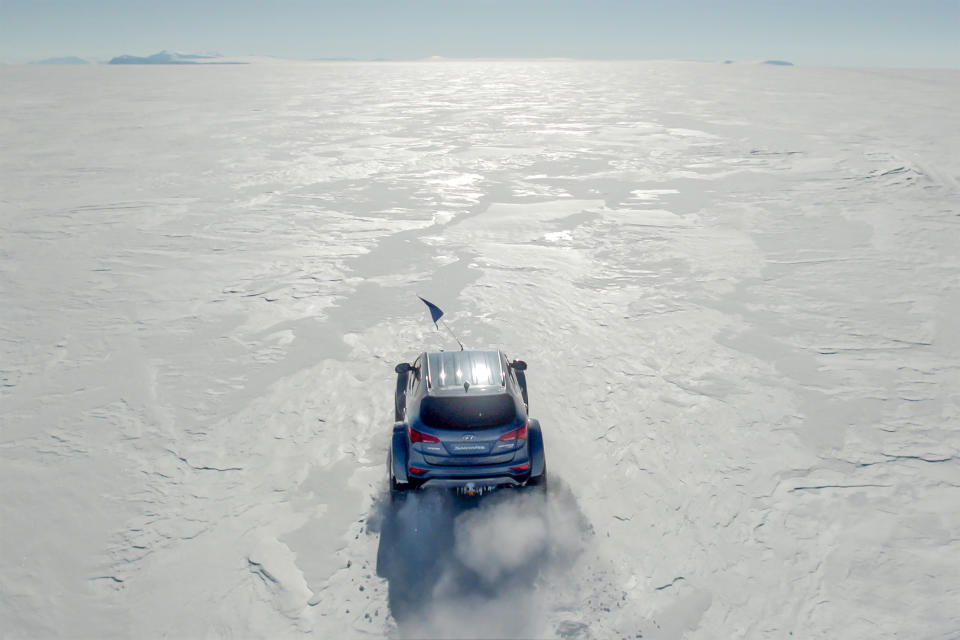
The Ross Ice Shelf comes next. It's fed by glaciers from over the mountains and is moving two to five meters a year, so you are now traveling over just ice. There is a ceremonial stick–a pole in the ice–marking when the rock underneath has gone but the ice is about 2,000 feet thick at that point, so there's no danger of falling into it! There is sort of a flagged route, though, done by the guys on sleds so you don't wander off into crevasses. We had some big whiteout periods there and cloud level is incredibly low because it's so flat, so you get these kind of rolling clouds tumbling over one another. Then we came to Erebus, which is the only active volcano in the region. My Great Grandfather was the first to climb Erebus and I'd seen pictures of it as a kid. It is quite spectacular, with plumes of smoke coming out and Mount Terror standing alongside. It was wonderful because I was at the wheel and it kind of exploded out of the cloud.
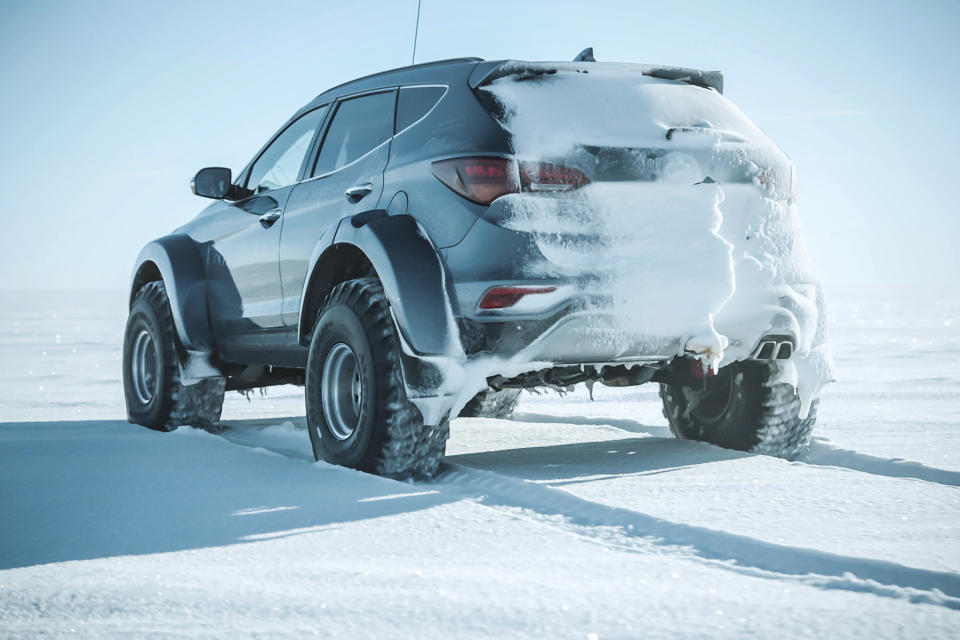
The next challenge was a deep crevasse field on the edge of McMurdo and we had to rope up the vehicles to get over it. I guess that was the most concerning bit of the trip–and it was one of the last bits! At night, around the camps, we would drive a loop in the snow and nobody was allowed to go outside it because it was not safe. But that was just sort of common sense-there wasn't a great deal of active danger. With the crevasse field we had to drive very carefully and we did get stuck at one point, for a few seconds. It wasn't the Hyundai, but one of the trucks we were tied to. There was a sort of vroomph then they got dragged out.
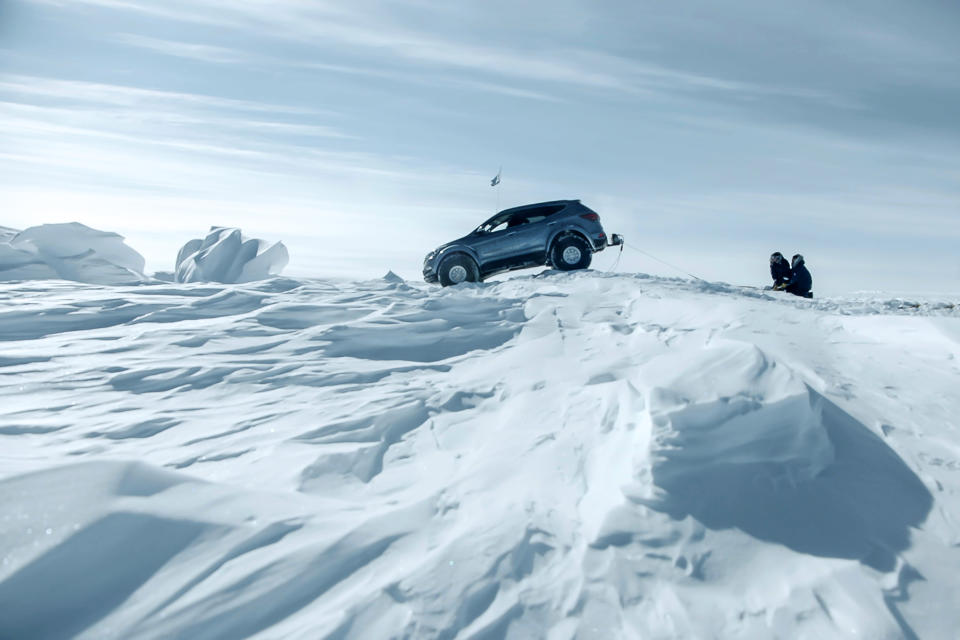
A one month journey, a century after Bergel's great-grandfather made his first attempt. Knowing how much this particular Santa Fe has been through, I almost found it hard to believe that they let me have a go behind the wheel on a rainy day in England, in the middle of a muddy quarry. But they did, mostly because the car is no museum piece. After the tour, it will go back to Antarctica to be used by the scientists who reside there.
I realize how difficult it must have been to get through all that whiteness and the hallucinations that come standard with it. Yet in every other situation, driving this car on soft rubber must have been the easiest job in the world. It has all the comfort features, like heated seats and bluetooth, just like in any other Hyundai crossover, while the much higher seating position gives you maximum visibility in all directions. It's got loads of traction in low range, naturally, and hill decent if you feel lazy. Exploration vehicles don't get much cozier than this, and compared to a built-up Land Rover Defender, the Arctic Trucks Hyundai is like a Bentley Bentayga. Only it looks way more authentic when covered in mud.
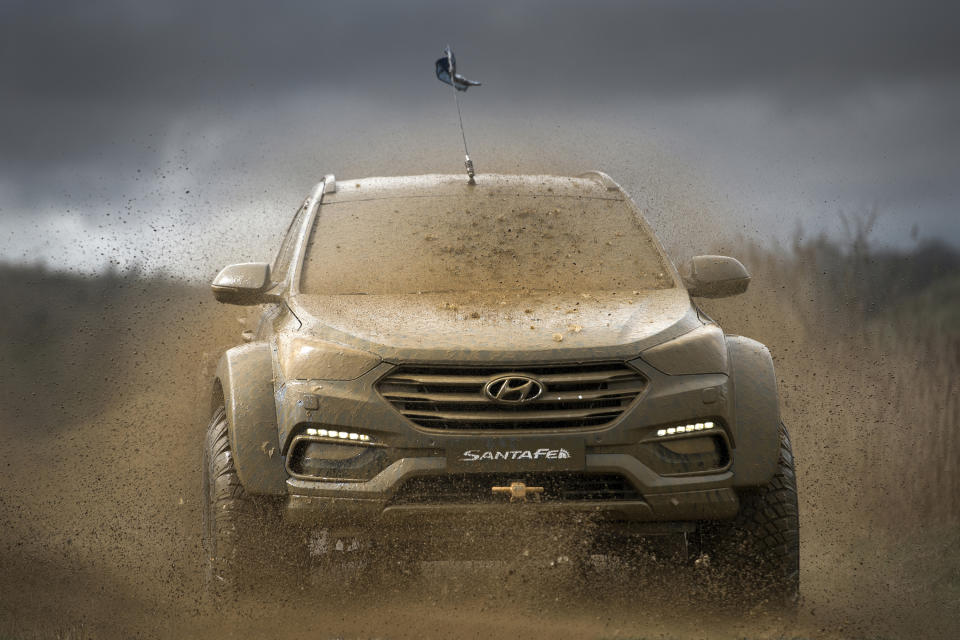
Interestingly, it was Sir Ernest Shackleton himself who took the first car to Antarctica, years before the Imperial Trans-Antarctic Expedition. The car in question was powered by a 15 horsepower, air-cooled four-cylinder engine, produced by the Scottish New Arrol Johnston Motor-Car Company.
It also must have run pretty poorly at -18 ºF.
You Might Also Like

